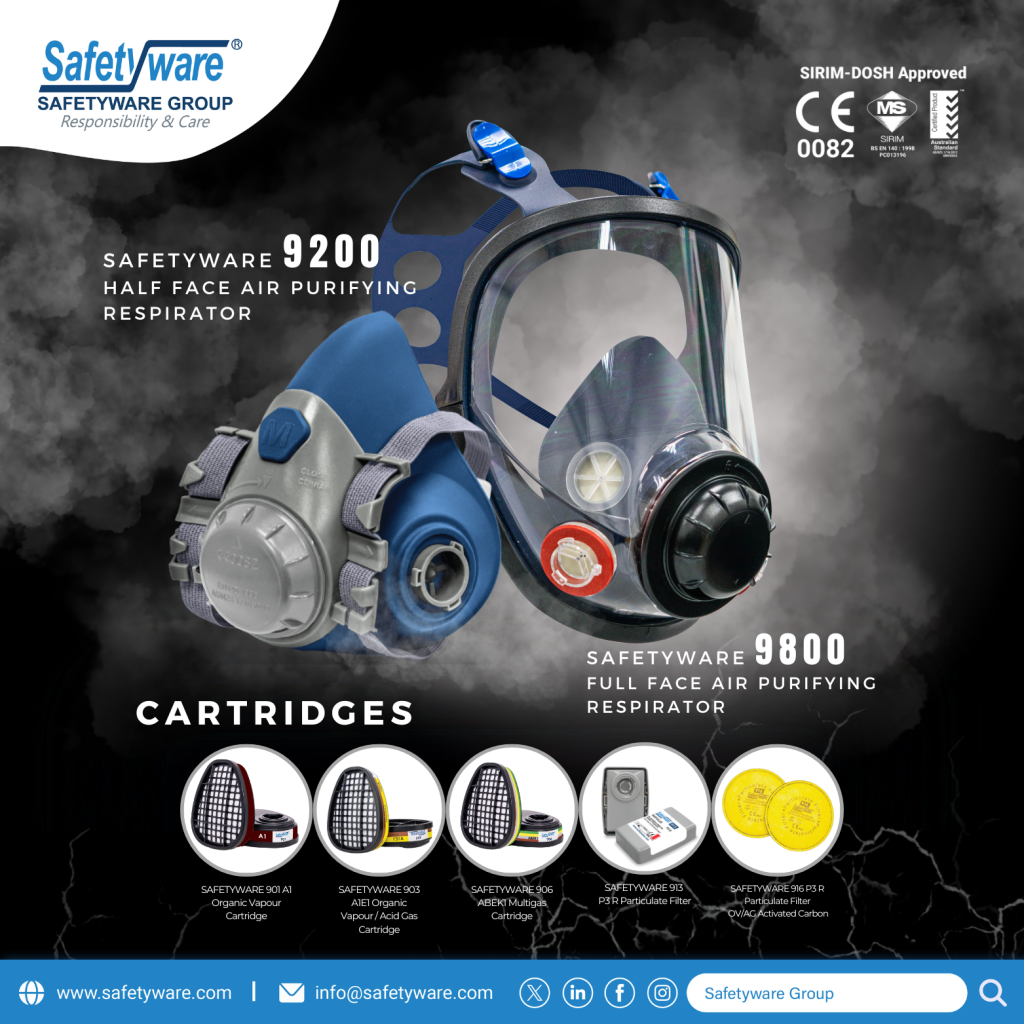In various industrial settings, respiratory protection is crucial to safeguard workers against airborne hazards such as dust, fumes, gases, and vapors. Respirators play a vital role in filtering out harmful particles and ensuring that workers breathe clean, safe air while on the job. Selecting the right respirator for specific workplace hazards is essential to protect respiratory health and promote overall safety. In this comprehensive guide, we provide a step-by-step approach to help employers and workers choose the most suitable respirator for their workplace needs.

Step 1: Identify Respiratory Hazards
The first step in selecting a respirator is to identify the specific respiratory hazards present in the workplace. Conduct a thorough assessment of the work environment to determine the types of contaminants, their concentrations, and potential exposure routes. Common respiratory hazards include particulates, gases, vapors, and biological agents. Understanding the nature of these hazards is crucial in choosing the appropriate respirator for protection.
Step 2: Understand Respirator Types
Respirators are categorized into two main types: air-purifying respirators (APRs) and supplied-air respirators (SARs). APRs use filters or cartridges to remove contaminants from the air, while SARs provide clean, breathable air from an external source. Within these categories, there are different respirator styles, including disposable masks, half-face respirators, full-face respirators, and powered air-purifying respirators (PAPRs). Familiarize yourself with the different types of respirators and their intended uses to determine which type is best suited for the hazards in your workplace.
Step 3: Select the Right Filter or Cartridge
For air-purifying respirators, the selection of filters or cartridges is critical in providing adequate protection against specific contaminants. Filters are designed to trap particulates, while cartridges absorb gases and vapors. Choose filters or cartridges that are certified to protect against the identified hazards in your workplace. Consider factors such as filter efficiency, cartridge lifespan, and compatibility with the respirator model.
Step 4: Assess Fit and Seal
A proper fit and seal are essential for the effective performance of a respirator. Ensure that the respirator forms a tight seal against the face to prevent contaminated air from leaking in. Conduct a fit test to verify the seal and make any necessary adjustments to achieve a secure fit. Different respirator models may have varying fit characteristics, so choose a respirator that provides a comfortable and secure seal for all users.
Step 5: Consider Comfort and Compatibility
Respirator comfort is crucial for ensuring worker compliance and productivity. Select respirators that are lightweight, well-balanced, and adjustable for a comfortable fit. Consider factors such as strap design, nose bridge shape, and exhalation valve placement
to enhance comfort during prolonged use. Additionally, ensure that the chosen respirator is compatible with other personal protective equipment (PPE) and does not interfere with vision, communication, or task performance.
Step 6: Train and Educate Users
Proper training and education are essential for the effective use of respirators in the workplace. Provide comprehensive training on how to properly don, doff, and maintain respirators, as well as how to conduct user seal checks and perform fit testing. Emphasize the importance of regular inspection, cleaning, and replacement of filters or cartridges to ensure continued protection and optimal respirator performance.
Step 7: Conduct Regular Maintenance and Monitoring
Regular maintenance and monitoring of respirators are essential to ensure their continued effectiveness and reliability. Establish a schedule for inspecting respirators, replacing filters or cartridges, and checking for signs of wear or damage. Implement a system for tracking respirator usage, conducting fit testing, and monitoring user compliance to maintain a safe and healthy work environment.
Conclusion
Choosing the right respirator is a critical aspect of ensuring workplace safety and protecting workers from respiratory hazards. By following this step-by-step guide and considering factors such as respiratory hazards, respirator types, filter selection, fit and seal, comfort, training, and maintenance, employers can select the most appropriate respirator for their specific workplace needs. Prioritizing the selection of high-quality respirators and providing comprehensive training and support for users are proactive steps towards promoting respiratory health, safety, and well-being in the workplace.
